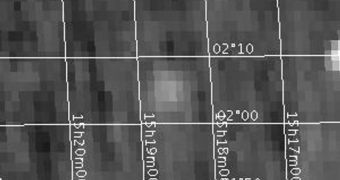The SkyView digital observatory, which has been in operation since 1994, is currently the leading source of information regarding parts of the Universe for teachers, experts, and simple visitors alike. As much as three million photos are requested from the application each year, from users all around the globe. Over the last decade, the amount of data that the virtual telescope deals with has accrued considerably, as have the demands of the public. For example, in terms of resolution (pixels), the overall traffic has increased by 6000 percent in ten years.
Ten years ago, in 1999, users generated about 20,000 images on average each month, requesting pictures of various portions of our solar system or our galaxy. In January 2009, the virtual telescope handed out more than 300,000 snapshots of the Cosmos. During this time, the size of the images ordered by users has increased on average by more than 400 percent, and the rate is still going up.
Basically, SkyView has been operating by accessing celestial surveys conducted by the most powerful observers in the world, and has made it its specialty to gain access to and manipulate that data in any way its users demand. According to the team running the software, it's now able to supply photographs in a full spectrum of wavelengths, from radio to gamma-rays, which makes it incredibly useful for people looking up specific information. Instead of browsing the websites for various observatories throughout the world, they can log in and request all they need in one place.
SkyView is highly-accessible through popular applications such as Google Sky and Microsoft's WorldWide Telescope (WWT). As of late, the program has been featuring the latest batch of data from NASA's Galaxy Evolution Explorer satellite, which should be made available on WWT starting today.
"When we were collecting data for use in WorldWide Telescope, we found that almost every new data source required special custom code to adapt it to wide-scale visualization. SkyView added support for our spherical all-sky projection, called TOAST. This was instrumental in helping us achieve our goal of making astronomy accessible to everyone," WWT architect Jonathan Fay, from the Microsoft Research facility in Redmond, Washington, says.
"SkyView has been used by WWT as an engine to convert a large number of surveys into its own format. We made it easy for WWT to have broad survey coverage," NASA's Goddard Space Flight Center SkyView project manager, Thomas McGlynn, adds. He explains that the system is so good that it can perform operations such as transforming, precessing, rescaling, rotating, overlaying, and mosaicking data, which means that all astronomers have to do is focus on their work, rather than waste time doing these things themselves.

 14 DAY TRIAL //
14 DAY TRIAL //